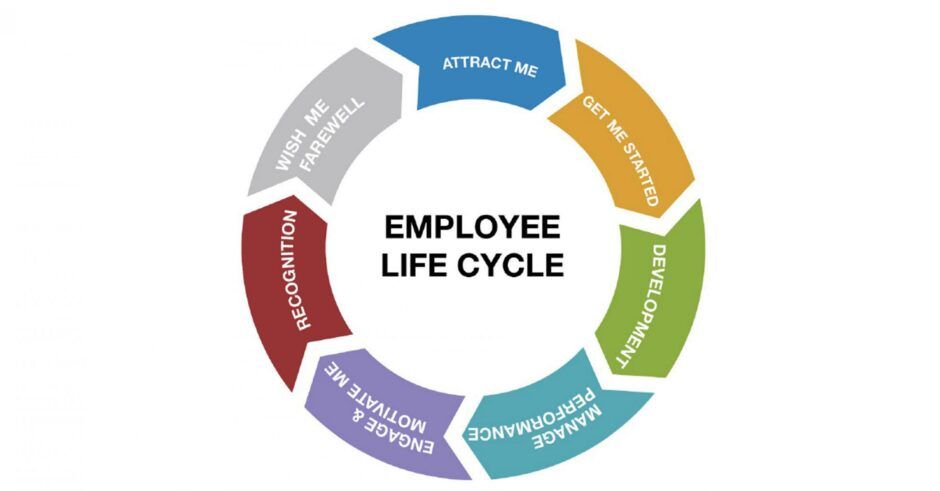How often do you think about your employees in respects to the experience they have from the beginning to the end of their employment with your organisation, from the moment they hear about your company to the time they walk away? We’re launching a series of blogs that focus on the elements within the employee lifecycle and as we’ve covered a lot about attraction in the past, we’re moving on to onboarding.
How often do you hear new starters say ‘well I was given a laptop, had a tour and then really I was left to my own devices’. One of the most critical times as to whether an employee stays, is engaged and performs is during their first 6 to 12 months.
KEY FACTS AS TO WHY YOU SHOULD FOCUS ON ONBOARDING:
Retention
- Employees are 70% more likely to stay with your business longer than 5 years if they had a mentor (Deloitte). An effective mentoring scheme can support onboarding and the development of employees.
- Up to 20% of employee turnover happens in the first 45 days (O.C.Tanner)
- Nearly 33% of new hires look for a new job within their first six months and 23% before their first 12 months (Harvard Business Review)
- The organisational costs of employee turnover are estimated to range between 100% and 300% of the replaced employee’s salary (HBR)
Productivity
- It typically takes eight months for a new hire to reach full productivity (Harvard Business Review) In fact, employees whose companies have longer onboarding programs gain full proficiency 34% faster than those in the shortest programs (Urbanbound)
- Lost productivity due to new hire learning curves can cost between 1% & 2.5% of the businesses total business revenue. In fact, In the US & UK alone, an estimated $37 billion is spent annually on keeping unproductive employees who do not understand their jobs! Organisations with a standard onboarding process experience 50% greater new hire productivity (Urbanbound)
- And yet, with all of these facts in mind, 22% of organisations still don’t have a formal onboarding process in place (Harvard Business Review)! Have a look at your retention figures for this employee population to understand whether onboarding is a challenge to your organisation.
SO WHAT HAVE WE LEARNT AND HOW DO WE TACKLE THIS?
The reason for focusing on an onboarding process is compelling but where do we start? Here are a few pointers:
Start the process before the employee joins. Provide information about the role, the organisation and the people they will be working with. Provide them with a clear onboarding calendar so the new hire knows what to expect when they start their new role.
Have the employees equipment, tools, work environment and any information they may need ready for day 1. The onboarding process should be seamless, make sure that everything the employee needs is ready for them for when they start or at the very least within the first couple of days.
Have a clear onboarding plan and calendar. The most daunting time for a new hire is starting their new role, walking through the door and meeting people for the first time. Invest time in pulling a schedule together for the key people the new hire will need to meet, the key things they should know and for the manager to talk through the role. All this information on one day is overwhelming, spread it out over a period of time and make sure the manager is engaged throughout the full process.
Schedule regular touch points: It’s so important for the relationship between the manager and new hire is maintained. Make sure that the managers schedule regular touch points with the new hire to make sure that they are OK, they understand their role, expectations and answer questions that they may have. This ensures the new hire feels valued and comfortable and any concerns they may have are raised and dealt with quickly, before they decide to walk away.
Make sure the right development interventions are in place: More often than not, new hires need some form of development during their first 12 months. Be clear about what these may be, plan to fill these gaps and support ongoing development within their new role. This not only supports the retention of the employee, it increases productivity at an earlier stage in their employment.
Extend onboarding beyond the first day, week and month: More successful onboarding schemes are spread out over a period of time. We already understand that it typically takes eight months for a new hire to reach full productivity and the greatest risk of an employee leaving the business is within the first 12 months. Extending the onboarding process up to 12 months by maintaining regular touch point reviews and development activities supports the retention, engagement and performance of the new hire.
Evaluate the performance of the onboarding process: It’s important to make sure that the onboarding scheme is running smoothly and you’re achieving what you need to from it. Have some success metrics in place, this could be retention, performance, productivity etc. Companies evaluate the onboarding process in various ways, you could use a simple online questionnaire, phone the new hire to check how successful the process is and check in with the manager.
Technology is playing a large part in onboarding now, a lot of the process can now be accessed online but don’t underestimate the value of human interaction, the manager plays the largest role in the onboarding process and they should own the responsibility of the success of new hires within their team.
The Business Transformation Network has posted this article in partnership with People Perform.




